You might’ve heard that square and cube rooms are bad for audio and music acoustics. This is correct but do you know which dimensions are best? In this article, we’re going to take a look at how dimensions affect your room’s sound. By the end, you’ll understand golden ratio acoustics. But, before that, let me summarize:
Cube and square rooms are bad because they reinforce the same frequency. This leaves you with one very resonant area in your bass response. You want to space out your room’s dimensions which will give you more even support throughout the bass range. When searching for a room, don’t pick a square or a cube!
Out With The Bad
First, I want to take a look at what a bad room looks like. This example comes from a member on the Audio Expert Forum. He recently moved into an apartment and was seeking advice.
He had a number of room options. I thought he should go with a smaller room but install more treatment. Against better advice, he chose the larger room with two identical dimensions.
The problem, as you’ll see in the image below, is that there is a ton of buildup at certain areas and lack of support in others. The effect of this is a room which sounds like the same bass note is playing all the time – aka ‘one-note-bass’. Since music uses 12 notes, you definitely want all of them to sound more or less the same.
A Case Study That Hertz
Let’s look at the layout:
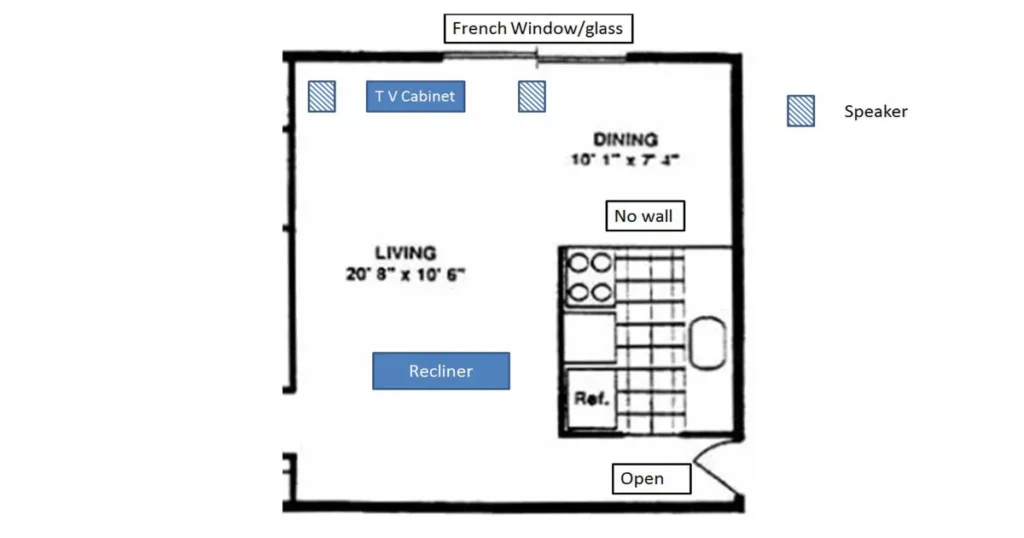
Now, I didn’t make this drawing and I don’t recall precisely what the dimensions are but, as we’ll see, the acoustic response tells the true story. I realize there’s a kitchen in there but, as a whole, the room is pretty square with two 20′ dimensions and an 8′ ceiling. If you use a frequency wavelength calculator or chart, you’ll be able to predict which frequencies will resonate.
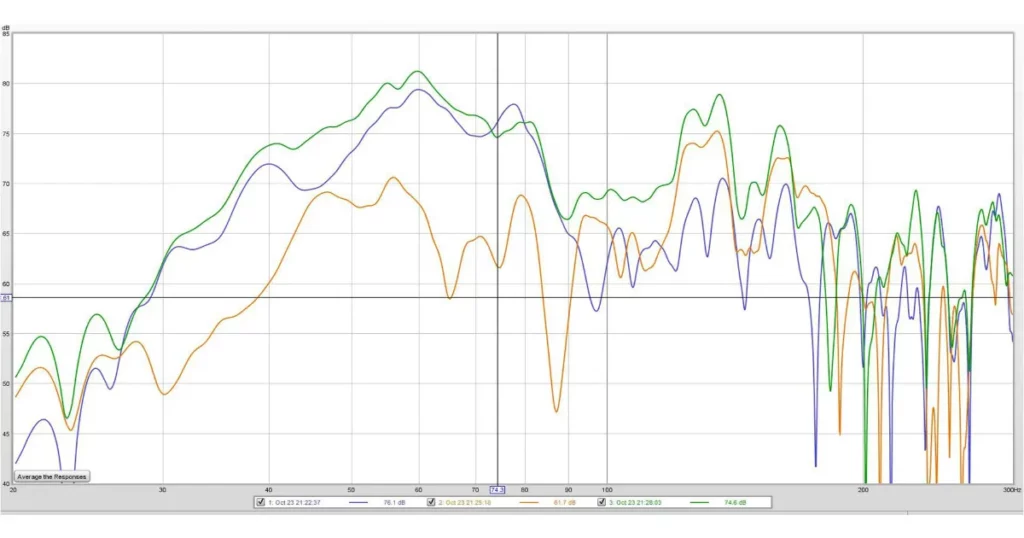
Above is the measurement he posted of the room. Clearly, this is a very uneven SPL graph. We have tremendous buildup at 60Hz followed by its octave at 120Hz and another resonance caused by the 8′ ceiling at 140Hz.
Beyond that, look at the range from about 85Hz-120Hz – it’s sagging like a snow-laden tree. Because there’s no dimension to support this range, it’ll sound weak in comparison to the double reinforced modes. For this reason, people have looked into what are the best dimensions for rooms.
Gold Standards
If there’s one truism about audio life it’s that acousticians rarely agree. Sure, there are some no-brainers and solid facts but there are also conflicting views. Specifically, there are many so-called ‘golden ratios’ so which one do you pick? Well, I look for corroboration.
For this post, I’ve selected just one source for room dimension golden ratios. If you’re going to build a room from scratch, I highly encourage you to do as much fact finding as possible. Then again, most of us are stuck with the rooms we have at hand.
Before looking at the following chart, I want you to keep in mind one thing: none of these ratios have anything like 1:2:4, 1:2:2, or 1:0.5:1, etc. The key takeaway is that they all have some kind of non-repeating distribution. A square or cube room is basically the opposite of these.
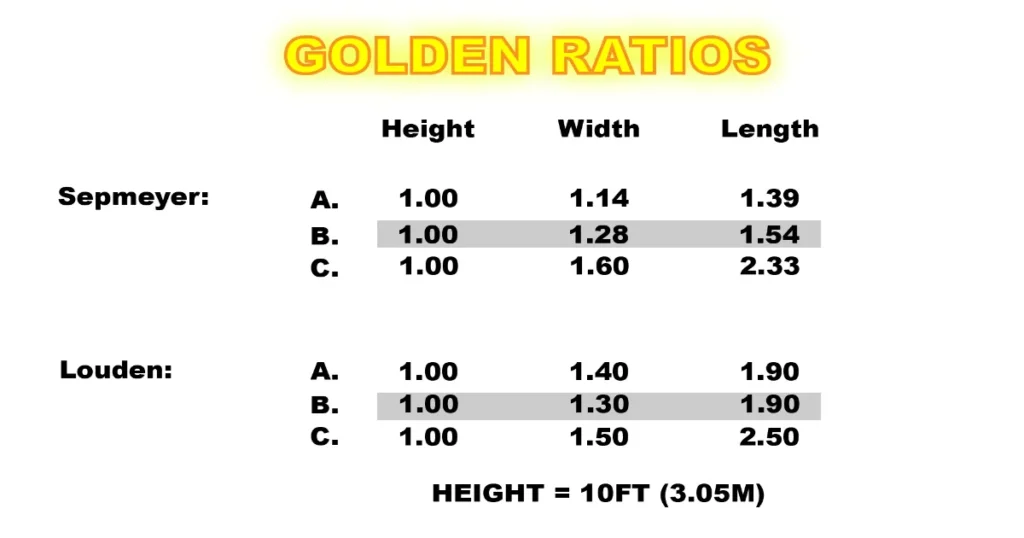
For various reasons, the minimum ceiling height is 10ft. This can include reflection strength and placing the shortest axial mode low enough in the spectrum. If you don’t know, axial modes are the three main resonances in a rectangular room: floor-ceiling, side walls, and front-to-back.
Pitch A Tent
You may or may not be clear as to how these golden ratios of room dimensions play out in real life. Well, take comfort because you’re not the only one. Indeed, it’s very hard to predict exactly what the response of any given space will be.
Part of what goes into a room’s actual SPL and decay acoustic responses are building materials, SBIR and LBIR, as well as oblique and tangential, lesser, room modes. So, to keep things as simple as possible, I’ve cooked up a simple analogy which will steer you in the right direction.
Everybody knows that a tent needs poles. Furthermore, these poles can not be all bunched up in the center of the tent. While doing so will give some support to the tent’s fabric, it will make the interior space uninhabitable. Besides that, the structure will not be evenly supported. Bass is just like this.
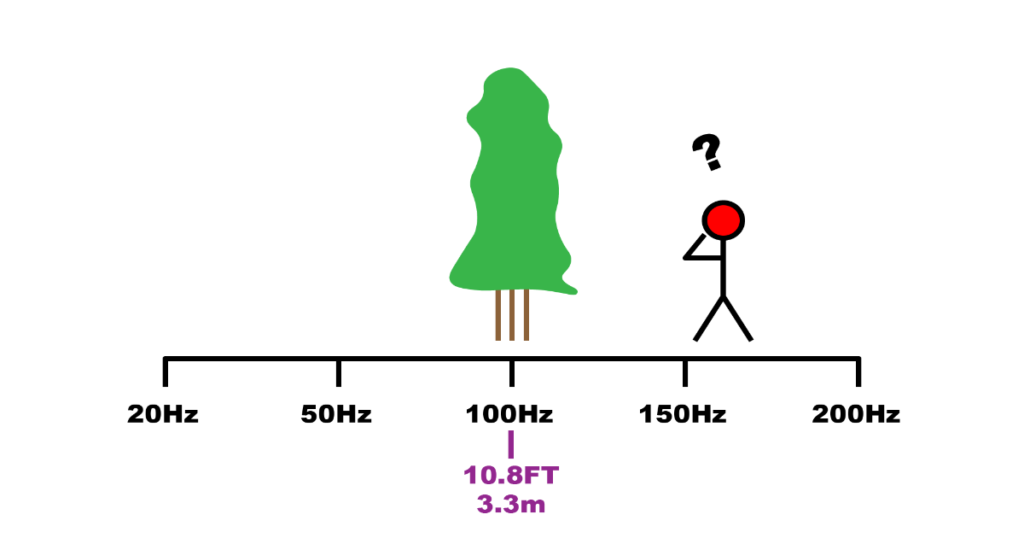
Bunched up tent poles like a square room’s modes.
Let’s open ‘er up a bit:
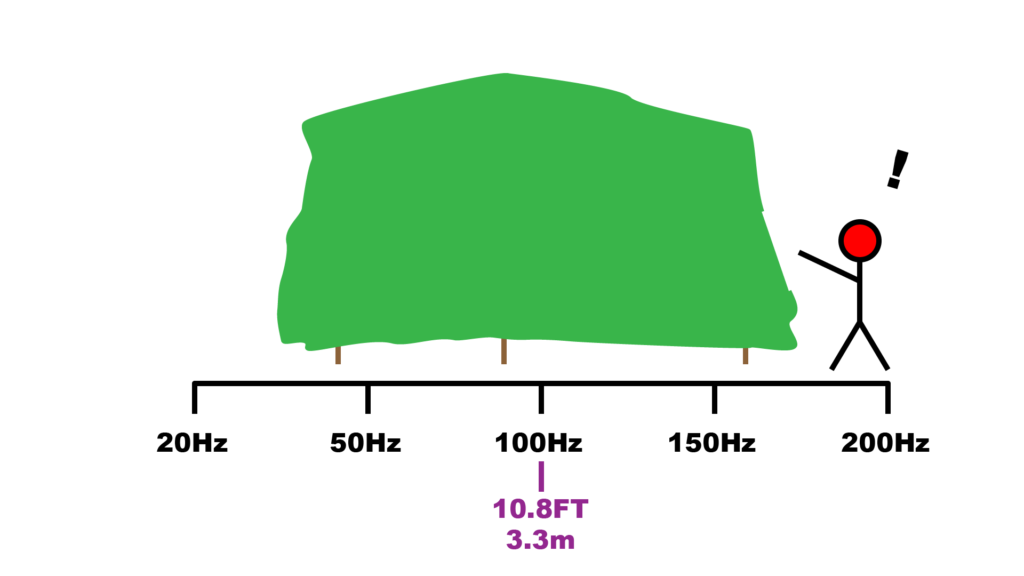
Final Analysis
By reading this, you should now understand why you want to avoid cube and square rooms. I realize that most of us won’t get to build our dream studio with yards of absorption and ideal room dimensions. Even so, knowing the how and why of golden ratio acoustics should serve you well in your audio life.
If you have any questions, feel free to hit me up on X (formerly Twitter) or Reddit. I’m happy to help anyone who is looking to improve their room. In the event you want one-on-one support for a project, be sure to include your budget. Thanks.
